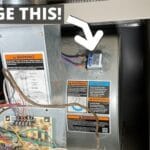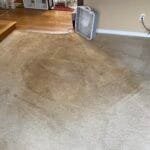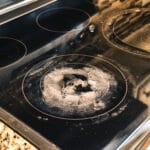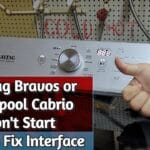Imagine it’s a chilly evening and your home isn’t warming up as it should. You hear a hum from your furnace, but nothing else happens.
The blower motor should kick into action, but instead, it sits silent, leaving your home cold and you frustrated. If your furnace blower motor hums but won’t start, you’re not alone—and you’re in the right place to find out why.
This common issue can disrupt your comfort, but understanding it is the first step to fixing it. You’re about to learn exactly what’s causing this problem and how you can solve it. This isn’t just about technical fixes; it’s about reclaiming the warmth and comfort of your home. You’re likely wondering if this is a costly repair or something you can handle yourself. We’ll break down the possible reasons and guide you through the steps to get your furnace back on track. Stay with us to uncover the secrets of your furnace’s hum and silence, ensuring you’re never left out in the cold again.
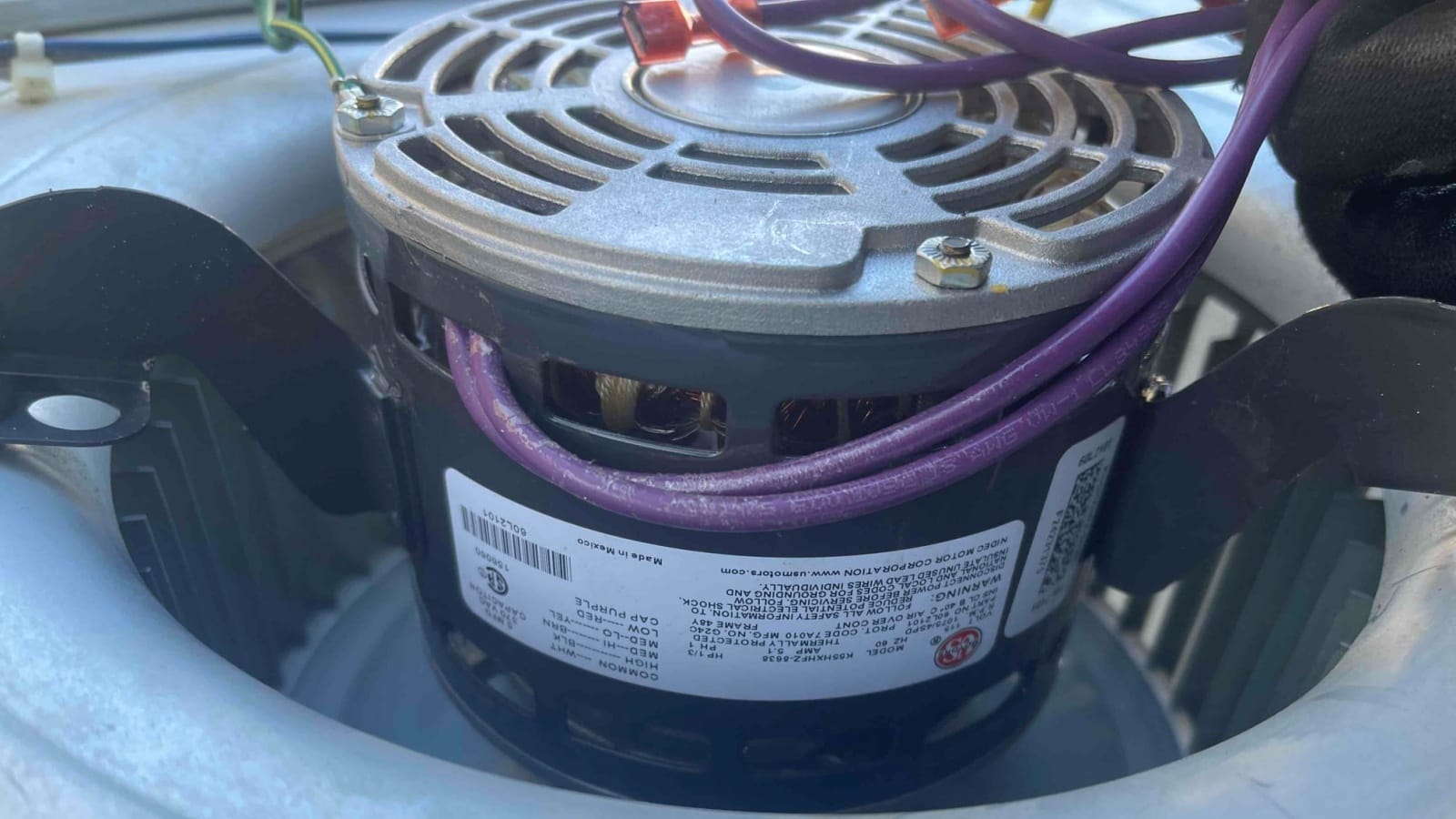
Credit: bobsrepair.com
Common Causes Of A Humming Furnace Blower Motor
A humming furnace blower motor can be puzzling. The motor tries to work but doesn’t start. This issue is common in many homes. Understanding the reasons helps in fixing it. Let’s explore some causes.
1. Capacitor IssuesThe capacitor gives the motor a start-up boost. If it fails, the motor hums but won’t start. Replacing the capacitor can solve this problem.
2. Blower Motor MalfunctionMotors can wear out over time. A worn-out motor might hum but not run. Regular maintenance can prevent this issue.
3. Blower Wheel ObstructionDebris can block the blower wheel. This blockage stops the motor from spinning. Cleaning the wheel can resolve the problem.
4. Electrical Connection ProblemsLoose wires can cause humming. This disrupts the electrical flow. Tightening connections can restore motor function.
5. Thermostat MalfunctionsA faulty thermostat gives wrong signals. This can cause the motor to hum. Checking the thermostat can identify issues.
6. Relay Switch FailureThe relay switch starts the motor. If it fails, the motor won’t start. Replacing the switch can fix the humming issue.
Understanding these causes can help in troubleshooting. Address each issue to keep your furnace running smoothly.

Credit: www.youtube.com
Identifying Motor Humming Sounds
Furnace blower motors sometimes hum but won’t start. This can be frustrating. Understanding these humming sounds helps in identifying the problem. Let’s explore how to pinpoint these sounds.
What Does A Humming Sound Indicate?
A humming sound often signals a problem. It might mean the motor is getting power. But it is unable to start. This can be due to several reasons. A blocked fan or a failing capacitor are common causes. Listen closely to the hum. It provides clues about the issue.
Identifying The Source Of The Hum
Locate where the sound is coming from. Is it the motor itself? Or perhaps the capacitor or another component? Stand near the furnace. Pay attention to the exact spot of the noise. This helps in diagnosing the problem accurately.
Humming Sound Patterns
Different patterns can suggest different issues. A constant hum might mean a capacitor problem. An intermittent hum could indicate mechanical obstruction. Paying attention to these patterns is crucial. It helps narrow down the problem.
Safety Precautions When Listening
Always prioritize safety. Never touch any components while the furnace is on. Listening is safe, but keep hands and objects away from moving parts. Turn off the furnace before inspecting further. This prevents accidents and ensures safety.
Inspecting The Capacitor
Inspecting the capacitor can reveal issues with the furnace blower motor. A faulty capacitor often causes humming but prevents the motor from starting. Testing and replacing the capacitor may solve the problem, ensuring efficient furnace operation.
Inspecting the capacitor can solve your furnace blower motor issues. A humming motor often signals a faulty capacitor. This small component holds the key to starting your furnace efficiently. Regular checks can prevent future problems. Let’s dive into the details.Signs Of A Faulty Capacitor
A humming sound is a common sign. The motor might struggle to start. It could start but then stop soon. You might notice a burnt smell. The capacitor could appear swollen. These signs indicate a problem. Early detection can save costs.Steps To Test The Capacitor
First, ensure safety. Turn off the power. Locate the capacitor in the furnace. Use a multimeter for testing. Discharge the capacitor safely. Set the multimeter to the capacitance setting. Connect the leads to the terminals. Read the multimeter display. Compare the reading to the capacitor rating. Replace it if readings don’t match. Ensure professional help for complex issues.Checking Electrical Connections
Experiencing a furnace blower motor that hums but won’t start? Check electrical connections for any loose wires or corrosion. Addressing this issue promptly can restore proper function and efficiency to your heating system.
Having your furnace blower motor hum but not start can be frustrating, especially during colder months. One crucial step in troubleshooting this issue is checking the electrical connections. Ensuring that all connections are secure and functioning properly can often resolve the problem without the need for professional help. Let’s dive into how you can tackle this task efficiently.Locating Loose Wires
Begin by turning off the power to your furnace. Safety first—always! Once the power is off, inspect the blower motor compartment. Look for any loose or disconnected wires. They are usually the culprits when it comes to hums that don’t lead to starts. Have you ever noticed how a simple loose wire can cause a major headache? If you find any loose wires, gently reconnect them. Make sure they fit snugly into their terminals. A small nudge can make all the difference.Ensuring Proper Voltage
After checking for loose wires, it’s essential to ensure your blower motor is receiving the right voltage. You’ll need a multimeter for this task. Set the multimeter to the AC voltage setting, and measure the voltage at the motor terminals. The reading should match the motor’s specifications, usually found on the motor’s label. If the voltage is off, it might be a sign of a bigger electrical issue. Wouldn’t it be great if fixing this was as simple as resetting a breaker or replacing a fuse? Regularly checking and maintaining your furnace’s electrical connections not only keeps your home warm but also ensures the longevity of your unit. Next time your blower motor hums but doesn’t start, remember these steps and consider if it’s time to call in a professional. What’s your next step when the DIY fixes don’t work?Testing The Blower Motor
If your furnace blower motor hums but won’t start, testing it is crucial. Identifying the issue can save time and money. Let’s look at two essential steps. Start with a visual inspection, then use a multimeter for testing.
Visual Inspection Of The Motor
Begin with a thorough visual check of the blower motor. Ensure the power is off before starting. Look for any signs of damage or wear. Frayed wires, loose connections, or burnt components could be the cause. Check if the motor spins freely. If not, there might be a blockage. Clean any visible dust or debris around the motor. This can prevent further issues.
Using A Multimeter For Testing
A multimeter helps test the motor’s electrical components. Set the multimeter to the ohms setting for resistance checks. Touch the probes to the motor’s terminals. A reading of zero or infinite indicates a problem. Next, switch to the voltage setting. Check the motor while the system is on. Ensure it receives adequate power. Low or no voltage suggests an electrical issue. If unsure, consult a professional for assistance.
Examining The Blower Wheel
The blower motor in your furnace is crucial for circulating warm air throughout your home. But what happens when it hums but won’t start? One key area to check is the blower wheel. This component can significantly impact the motor’s performance. A simple examination might reveal the root of the problem and save you from costly repairs.
Identifying Obstructions
Start by inspecting the blower wheel for any obstructions. Dust, dirt, or debris can accumulate over time, blocking the wheel’s movement. You might be surprised to find objects like screws or bits of insulation stuck in there. These can prevent the wheel from spinning freely, causing the motor to hum instead of starting.
Have you ever wondered how often tiny particles can affect such a big machine? Regular checks can prevent these obstructions from becoming a bigger issue. It’s like giving your furnace a health check-up. You wouldn’t skip a doctor’s appointment, right?
Cleaning The Blower Wheel
Cleaning the blower wheel is a straightforward task that can make a huge difference. First, ensure the power is off to avoid any accidents. Then, gently remove the wheel from the motor housing. Use a soft brush or cloth to wipe away dust and debris.
A clean blower wheel can improve airflow and efficiency. Think of it like cleaning your car’s windshield for a clearer view. It’s amazing how small maintenance steps can enhance performance. You’ll feel the difference in the warmth and comfort of your home.
Have you ever cleaned a blower wheel before? If not, it might be time to give it a try. You may find the process easier than expected and rewarding in terms of the results it delivers.
When examining the blower wheel, your actions today can prevent future headaches. Is your furnace blower motor humming but not starting? Take a look at the blower wheel—it might just be the key to solving your issue. Make it a part of your regular maintenance routine.
Inspecting The Motor Bearings
Inspecting the motor bearings is crucial when a furnace blower motor hums but won’t start. Check for signs of wear or damage. Regular maintenance ensures smooth operation and prolongs motor life.
When your furnace blower motor hums but won’t start, inspecting the motor bearings can be a crucial step in identifying the problem. Motor bearings play a vital role in ensuring the smooth operation of your furnace blower. If they’re worn or damaged, they can cause the motor to hum instead of function correctly. Let’s dive into the signs of worn bearings and how to replace them effectively.Signs Of Worn Bearings
Worn bearings can lead to noticeable changes in your furnace’s performance. One common sign is the humming sound itself. This indicates the motor is struggling to turn the fan blades. Another sign is increased noise during operation. If you hear grinding or whining noises, your bearings might be the culprit. You might also notice uneven or reduced airflow from your vents. This can result from the motor not spinning efficiently due to bearing issues.Replacing Motor Bearings
Replacing motor bearings isn’t as daunting as it sounds. First, ensure the power to your furnace is turned off. Safety should always be your priority. Next, consult your furnace’s manual to locate the motor. Once you’ve found it, carefully remove it to access the bearings. With the motor out, you can remove the old bearings. They might be secured with clips or screws, so having the right tools is essential. After removing them, install the new bearings in their place. Reassemble the motor and test it by turning the power back on. If the humming sound persists, there might be another issue at play. Remember, if you’re unsure, it’s always wise to consult a professional. Have you ever replaced motor bearings yourself? What challenges did you face, and how did you overcome them? Your experiences can be invaluable to others facing the same issue.Evaluating The Control Board
When a furnace blower motor hums but won’t start, the control board might be the problem. This vital component manages the blower motor’s operation. Understanding its function can help diagnose issues. Evaluating the control board requires a careful approach to avoid further damage.
Recognizing Board Malfunctions
Start by observing the furnace’s behavior. A humming sound may indicate a faulty control board. Check for visible signs of damage like burns or corrosion. These signs often point to a malfunctioning board. Also, consider any recent power surges or outages. They might have affected the board’s performance.
Repair Or Replace The Control Board
Once you identify a malfunction, decide whether to repair or replace. Repairs might be possible if the damage is minor. This option can be cost-effective. But, if the damage is extensive, replacement is advisable. A new control board ensures reliable furnace operation.
Consult a professional for a thorough evaluation. They can provide guidance on the best course of action. Their expertise ensures the furnace runs efficiently and safely.
When To Call A Professional
Experiencing a humming sound from your furnace blower motor without starting signals a need for professional help. Persistent issues may indicate electrical problems or motor failure, requiring expert diagnosis and repair. Ignoring it could lead to bigger issues.
When your furnace blower motor hums but won’t start, it can be tempting to try a DIY fix. However, there are times when calling a professional is the best course of action. Understanding when to make that call can save you time, money, and a lot of frustration.Understanding Complex Issues
Blower motors are intricate parts of your furnace. A hum without movement might indicate an electrical problem, like a faulty capacitor or motor failure. Without proper tools and knowledge, diagnosing and fixing these issues can be risky. Sometimes, what seems like a minor issue could be a symptom of a larger problem. Professionals have the expertise to identify these complexities. By calling a professional, you ensure the problem is correctly diagnosed and effectively resolved.Preventing Further Damage
Attempting to fix the blower motor yourself might lead to further damage. Imagine accidentally damaging a component or misinterpreting a wiring diagram. This can lead to more costly repairs or even the need for a complete replacement. A professional will have the experience and tools to handle the repair safely. They can ensure that other parts of the furnace remain undamaged. This proactive approach can help extend the life of your furnace and keep your home comfortable. Have you ever tried a DIY repair that went awry? Learning from past experiences can guide you to make better choices, like knowing when to call in the experts. When your furnace hums but won’t start, it might be time to pick up the phone. Save yourself the hassle and potential risks by trusting a professional to handle the job.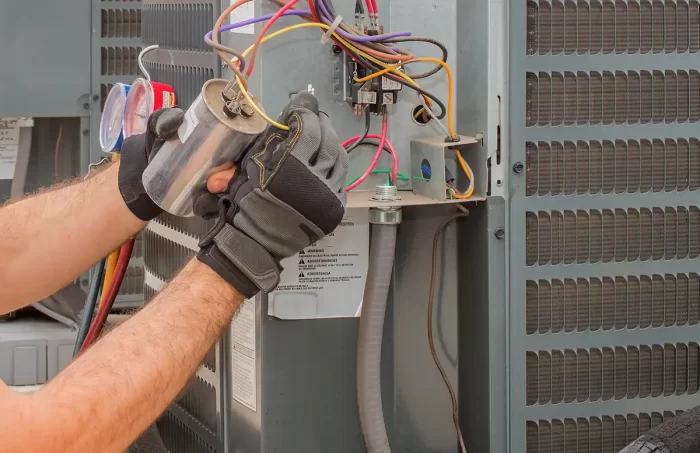
Credit: reddihvac.com
Frequently Asked Questions
Why Does My Furnace Blower Motor Hum?
A humming sound often indicates electrical issues. It may be a failing capacitor or motor problem.
How Can I Fix A Humming Blower Motor?
First, turn off the furnace. Check the capacitor and motor. Replace if necessary.
Is A Humming Blower Motor Dangerous?
Yes, it can be. It might overheat or cause electrical problems. Address it promptly.
What Causes A Blower Motor Not To Start?
Common causes include a faulty capacitor, motor problems, or electrical issues. Check these components.
Should I Call A Professional For A Humming Motor?
Yes, if you’re unsure. A professional can safely diagnose and fix the problem.
Conclusion
Fixing a humming blower motor can seem daunting. Start by checking power connections. Ensure the motor isn’t jammed. Look for loose or broken parts. Inspect the capacitor; it might need replacing. Consider cleaning the blower motor. Dust and debris can cause issues.
When in doubt, call a professional. Safety comes first. A working furnace ensures comfort and warmth. Regular maintenance prevents future problems. Keep your furnace in top shape. Your comfort depends on it.


